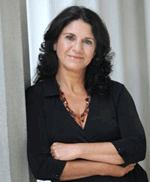Canada’s income gap grows
Published on Thu, 2011-07-14 09:24
Source: The Star. Income inequality in Canada is widening as the rich get richer while poor and middle-income people lose ground, says the Conference Board of Canada in a report released Wednesday, according to The Star newspaper. “While the poor are minimally better off in an absolute sense, they are significantly worse off in a relative sense. And where is the middle-class in all of this? These are important questions for society,” said board president Anne Golden in an interview. The 33-year trend which has accelerated since 1993 raises questions about the country’s economic well-being, including whether Canada is using all the skills and talents of its citizens and whether social cohesion and fairness are being undermined, says the report titled "How Canada Performs: Is Canada becoming more unequal?" “The significance of this report is that it is now firmly on the radar of the business establishment,” said economist Armine Yalnizyan who has written several reports on the issue for the Canadian Centre for Policy Alternatives that are referenced by the Conference Board. “The jury is no longer out. This is a pressing issue of our era,” Yalnizyan added. The Conference Board report examines various measures of inequality, including median income, the point at which half of earners have more income and half earn less. The report notes that between 1976 and 2009, the median income rose by just 5.5 per cent from $45,800 to $48,300. While the poor didn’t get poorer according to real income levels, they did get poorer in a relative sense, says the report. Between 1976 and 2009 the earnings gap between the lowest 20 per cent and the top 20 per cent of earners grew from $92,300 to $177,500, showing that income growth is being distributed unequally. Another measure of inequality, called the Gini index, shows that in 2009, 32 per cent of Canada’s national income would have to be redistributed to have a country that is completely equal in terms of income, the report says. In the late 1980s, it was just 28 per cent. The Conference Board analysis is part of a multi-year research project to help leaders identify relative strengths and weaknesses in Canada’s socio-economic performance. It is funded this year by 24 major public and private sector corporations including Ontario’s economic development ministry and Hydro-Quebec.
|


